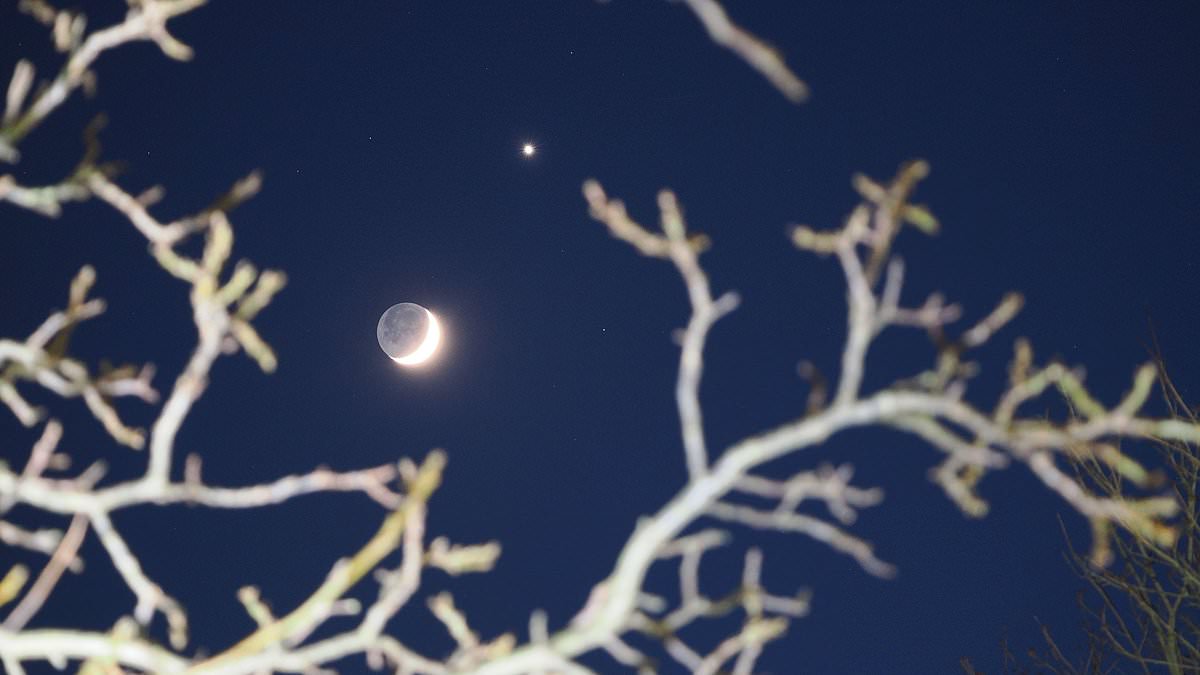Jaw-dropping pictures show Venus dazzling in the darkness tonight as a rare cosmic phenomena takes place.
The planet could be seen floating above the moon just hours after sunset this evening.
Stunned spectators have taken to social media to share incredible pictures of the unusual event.
It comes as in 2023 stargazers around the world were treated to a spectacular celestial embrace between two of Earth’s planetary neighbours.
Venus and Jupiter – the two brightest planets in the sky – got so close that they appeared to nearly collide, or look as if they were ‘kissing’.
Officially, the two performed a ‘conjunction’ – when any two astronomical objects appear to be close together in the sky when observed from Earth.
Although Venus and Jupiter seem side by side to the human eye, in reality they are still 400 million miles (600 million km) apart.
Meanwhile, Mercury – the solar system’s smallest planet – will soon be visible from Earth when it reaches its maximum elongation from the sun.
‘These kinds of alignments in our skies, sometimes known as planet parades, only occur from our perspective here on the Earth,’ Jake Foster, an astronomy education officer at Royal Museums Greenwich, told .
‘The planets themselves are not physically aligned in space during these events, meaning that the perceived alignment is unique to our perspective.’
Over the past week, the two planets have got closer and closer together, viewable in the west not long after sunset.
Venus is the brighter of the two, while Jupiter is dimmer and has a more of a yellowish colour to it.
Over the last few days, Venus had appeared to head up into the sky, away from the horizon, while Jupiter has done the opposite.
Fortunately for stargazers, Venus will continue to shine in the west for several more months as it gets higher.
Jupiter, meanwhile, will only be visible for a few more weeks as it disappears below the horizon.
So in case you missed it, you still have the opportunity to admire the planets in the sky after sunset tonight.
Jupiter is shining twice as bright as Sirius – the brightest star in the sky – while Venus is six times brighter than the gas giant.
Because they are still fairly low-lying on the horizon, finding a spot on a hill and away from tall buildings will provide a good view.
